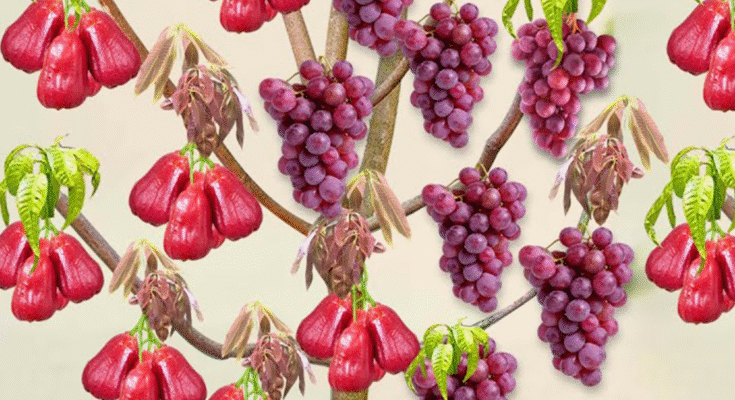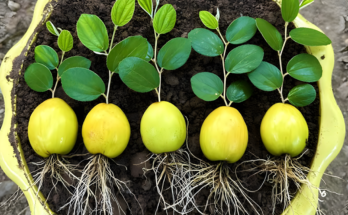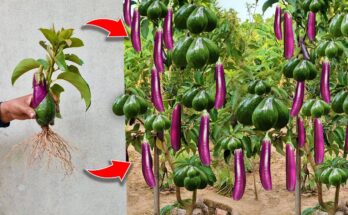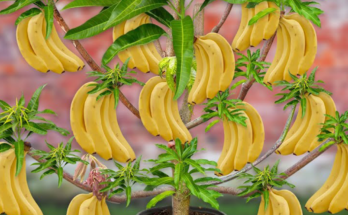New Techniques for Growing Java Apple Tree From Java Apple Fruit Get Lots of Fruits
Java apple, also known as wax apple, water apple, or bell fruit, is a tropical fruit tree admired for its crisp texture, refreshing taste, and high yield potential. Many gardeners and farmers are now seeking innovative methods to grow this tree directly from its fruit in order to produce more harvests in a shorter time. Traditionally, Java apple is propagated by seeds or vegetative methods like grafting and air layering. However, new techniques have emerged that make the process faster, more reliable, and highly productive. This article will explore step-by-step methods of growing a Java apple tree from fruit, with tips to ensure that it produces lots of fruits year after year.
1. Selecting the Right Java Apple Fruit
The journey of growing a healthy Java apple tree starts with choosing the right fruit. Not every fruit will give you viable seeds or healthy growth. Here are some important considerations:
- Pick ripe fruits that have a firm, glossy skin and vibrant color.
- Avoid fruits with pest damage or fungal infection.
- Larger fruits often contain stronger seeds, which increase the chances of better germination.
Once you have selected the fruits, carefully open them and remove the seeds. Wash the seeds with clean water to eliminate pulp residue that may cause fungal growth during germination.
2. Pre-Germination Treatment for Seeds
One of the new techniques for ensuring strong germination is seed pre-treatment. Java apple seeds can sometimes be slow to sprout if planted directly. To speed up the process:
- Soaking method: Place the seeds in warm water for 12–24 hours before planting. This softens the seed coat and stimulates quicker sprouting.
- Natural growth booster: Soak the seeds in organic solutions such as aloe vera juice or diluted seaweed extract to improve root vigor.
- Paper towel method: Wrap the seeds in a moist paper towel, place them in a plastic bag, and keep them in a warm area. After 7–10 days, small roots will start to emerge, which indicates they are ready for planting.
This step greatly increases germination rates and ensures that only healthy seeds are used.
3. Growing Java Apple Tree in Containers
A new and popular method is to start Java apple seedlings in containers before transferring them to the ground. This has several advantages:
- You can control soil quality.
- Protection from pests and excess rainfall is easier.
- Root systems develop in a healthier and more compact form.
Steps:
- Prepare pots with a mixture of 40% garden soil, 30% compost, and 30% sand or coco peat for proper aeration.
- Plant each germinated seed about 2 cm deep in the soil.
- Water lightly, making sure the soil remains moist but not waterlogged.
- Keep the containers in partial shade until seedlings grow 15–20 cm tall.
After 2–3 months, the seedlings will be strong enough to transplant into the ground or larger pots.
4. Grafting and Budding for Early Fruiting
Although Java apple trees grown from seed can produce fruit, they may take longer and sometimes have variable quality. A new and highly effective technique is combining seedling growth with grafting or budding.
- Once the seedling grows sturdy, graft it with a scion from a mature, high-yielding Java apple tree.
- This ensures that the young tree inherits the desirable traits of the mother tree, such as sweetness, size, and high productivity.
- Grafted trees typically produce fruits within 2–3 years, compared to 4–5 years for seed-grown trees.
This hybrid technique—growing from seed fruit combined with grafting—gives both strong root development and reliable fruit quality.
5. Training and Pruning the Tree
A key to getting lots of fruits from a Java apple tree is proper training and pruning techniques. Many new growers overlook this step, leading to tall, unmanageable trees with fewer fruits.
- Train the young tree to form 3–4 main branches evenly spaced around the trunk.
- Prune off weak, crossing, or downward-facing branches.
- Regular pruning encourages better air circulation and sunlight penetration, which results in more flowers and fruits.
By shaping the tree early, you ensure maximum productivity in later years.
6. Organic Feeding Techniques
Java apple trees are heavy feeders and need a balance of nutrients to bear abundant fruits. A new sustainable approach is to use organic and natural fertilizers instead of relying solely on chemicals.
- Compost tea or banana peel solution can provide potassium for better flowering.
- Fish emulsion and bone meal supply nitrogen and phosphorus for root and leaf development.
- Applying mulch from dried leaves or grass keeps the soil moist and adds organic matter.
Using these methods not only improves yield but also enhances the natural sweetness and crispiness of the fruits.
7. Flower and Fruit Management
Another technique for increasing fruit production is flower thinning and hand pollination.
- Flower thinning: Instead of letting all flowers develop into fruits, remove some of them early. This helps the tree focus its energy on fewer, larger, and sweeter fruits.
- Hand pollination: In areas with fewer pollinators, gently brushing the flowers with a soft paintbrush improves fruit set.
By managing flowers and fruits carefully, you can ensure consistent and high-quality harvests.
8. Pest and Disease Prevention
To protect the tree and ensure abundant fruiting, try these eco-friendly techniques:
- Spray a mixture of neem oil and mild soap to deter pests naturally.
- Use turmeric water or garlic spray as a natural fungicide.
- Keep the area under the tree clean and free from fallen leaves or spoiled fruits that attract insects.
Preventing problems early is always easier than treating them later.
Conclusion
Growing a Java apple tree from fruit is not only possible but also highly rewarding when combined with modern techniques. By carefully selecting fruits, pre-treating seeds, growing in containers, and later using grafting methods, you can create strong, high-yielding trees. Proper pruning, organic feeding, and flower management will further maximize production, ensuring that your Java apple tree provides plenty of delicious, refreshing fruits for many years.
With these new techniques, both home gardeners and farmers can transform a single Java apple fruit into a thriving tree that produces baskets of sweet, juicy fruits every season.



